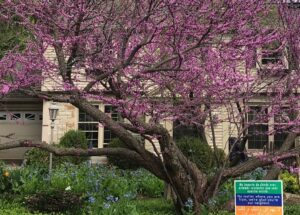
One of Carl Jung’s most haunting statements: What we do not make conscious appears to us as Fate. We may sometimes call an outside event like an illness or an accident “fate.” Jung’s great insight, however, was to recognize that what “happens to us” is intimately connected to what is going on inside and that only by turning inward and exploring the hidden aspects of ourselves, our shadow parts, might we gain a deeper knowledge of who we are and attain a sense of agency about our destiny.
When I asked renowned psychoanalyst and Jungian scholar Murray Stein what he’d like to discuss together here, he didn’t hesitate: “Anger.” Anger is one of the emotions that often remains unconscious, in our shadow, as Jung might say. But in today’s world, unprocessed and unrecognized anger, and its destructive buddy, violence, is rocking the foundational supports of individuals and nations.
 How are we to process this powerful force, personally and as a species? I can think of no better person to illuminate how inextricably connected the inner and outer worlds of anger are than my dear friend and mentor, Murray Stein. Murray’s perspective comes from his scholarly investigations of Jung and from his past role as president of The International Association for Analytic Psychology as well as being a clinician and teaching analyst in Zurich with an international following. I’m delighted to introduce you to his work. This will be the first in a series of two interviews with Dr. Stein.
How are we to process this powerful force, personally and as a species? I can think of no better person to illuminate how inextricably connected the inner and outer worlds of anger are than my dear friend and mentor, Murray Stein. Murray’s perspective comes from his scholarly investigations of Jung and from his past role as president of The International Association for Analytic Psychology as well as being a clinician and teaching analyst in Zurich with an international following. I’m delighted to introduce you to his work. This will be the first in a series of two interviews with Dr. Stein.
Dale Kushner: What is the difference between anger, rage, and aggression? Is it important we understand the difference?
Murray Stein: Anger has many degrees of heat. Rage is the highest. It is red hot, burning, emotion in uncontrollable flames. Aggression is action sometimes taken as the result of anger, or rage, and sometimes not. Aggression can be quite cold-blooded and calculating as we see in the strategic moves of chess players and politicians. Anger and rage disrupt clear thinking and so are not much in evidence if aggression is carried out for strategic purposes. Of course, anger might be behind the strategic moves of aggression as a fundamental motivation for acts of calculated aggression, like the raging dictator ordering his rational military to go to all-out war.
DK: Are you now encountering more dreams about anger in your practice and among your students?
MS: The short answer is “yes.” We know that anger is one of the basic emotions and is always with us as a species. However, it seems to be an exceptionally predominant emotion throughout the world nowadays. It’s as though the entire human population has become choleric, edgy, quick to anger. This hot emotion rises fast and furious in families, boils up in social and professional circles, infects political arguments, and rages on the roads and highways. And yes, anger even erupts among Jungian students in the classroom over issues like wearing the mask or not. We live in a world where splitting energy is rampant everywhere. It feeds on divisions and fuels hatred of the perceived “other.” Dreams sometimes reflect the emotionality of the awake mind, and sometimes not.
DK: Are similar images or themes appearing?
MS: A related theme is vulnerability and victimization. This comes up frequently in dreams. Dreamers find themselves in dangerous situations and have to make decisions that could prove life-threatening or life-saving. I haven’t made a statistical study of the frequency, but my guess would be that dreams of vulnerability – to oneself, to a child or loved one – have increased during the Pandemic.
 DK: How do these more recent dreams of anger differ from anger dreams you saw earlier in your practice?
DK: How do these more recent dreams of anger differ from anger dreams you saw earlier in your practice?
MS: Maybe I’m just more sensitive to the issue of anger now, but these more recent dreams of anger do seem exceptionally intense. I personally had a dream recently in which I became angrier than I can remember ever being. A brief summary of the dream: a man carelessly ignited a fire that nearly destroyed the building I was in and then nonchalantly refused to take responsibility for his action. I flew into a rage at him. It was his lack of accepting responsibility for the fire that made me so angry, more than the fact of the fire itself. When I woke up from this dream, it took me some time to cool down. I immediately associated the irresponsible individual with a notorious politician who will go unnamed.
DK: How is anger manifesting in your patients’ lives? Would you say it is related to the current collective global turbulence?
MS: I hear accounts regularly of anger flare-ups in their lives. Sometimes it is at home – for example, a mother of a young child who can’t go to school and is overwhelmed by her responsibilities toward her child, her work, her husband. Anger flares quickly and without much immediate cause in this circumstance. It’s simmering constantly in the background and flares up at the slightest provocation. This is not her usual pattern. Another instance is a father who becomes furious with his grown daughter because she voted for the other political party and he now refuses to speak to her. Sometimes it is in the online work situation – short tempers flare because of distance and poor communications among the members of a team. I get the feeling that Ares, the angry god of war, is taking over as the dominant archetypal energy of the times. Everyone seems ready to go to war at a moment’s notice and often with the thrill and pleasure associated with the war-monger god.
DK: Does anger seem more prevalent in this decade than previous ones you’ve practiced in?
MS: Yes. More precisely, in the last five years, since the manifestation of political divisions between left and right have sharpened worldwide, and also the economic disparities between the ultra-rich and the rest have become intolerable, and then also since the Pandemic has generated its dynamics of tension and anger. The patients I see are subject to all of these collective stresses, and we have to deal with them in the sessions of psychotherapy while also of course dealing with their particular issues from their personal life histories. The collective tensions come into dreams and personal relationships. We are all embedded in the collective and cannot avoid the emotions that collective issues generate in the people around us.
 DK: What are the consequences of personal and collective anger?
DK: What are the consequences of personal and collective anger?
MS: As I said above, the consequences are both destructive and creative. James Hillman, who was an astrological Ares, once said that he could not write if he was not angry. Anger motivated him to create. In other cases, anger results in rubble and ruin, of individuals and civilizations. The splitting energy that we see rampant in the world today might be the harbinger of a new civilization in the making beyond the angry present, or it might be nothing more than a signal that the present systems of organizing human society are broken beyond repair.
DK: What guidance might you suggest to populations overwhelmed by righteous anger?
MS: Righteous anger is still anger, and it can become so powerful and convincing that one could speak of possession. Jung defined psychosis as a state of possession by archetypal energies. In this condition, you say and do things that are not balanced. Fueled by righteous anger, they can lead to committing acts as unjust as the injustices you are protesting against in your righteousness. My suggestion would be to hold on to your thinking and feeling functions, that is, to your capacity to think rationally and to follow the guidance of your best values. If you lose contact with these functions, you are in trouble and in danger of possession. The expression of this usually leads to backlash and retribution, so not to a good result if you think about it. However, righteous anger must be expressed or it will turn to bitterness and hatred. It’s a question of how to express this type of anger. The form is important. My suggestion is to express the anger but not to let the anger per se take control of your actions.
DK: What would be a positive way to mitigate collective anger?
MS: Leadership! The anger must be heard, and there must be a response from collective leadership that gives hope of remediation. Then action. Words are not enough.
DK: Are there other extreme emotions being expressed more often in this decade (in America)? Positive or negative.
 MS: It’s hard to say. Maybe despair. This has been a time of what I’ve called umbra mundi, the shadowed world, as though we’ve been living in a longtime eclipse of the sun and moon. It’s a dark time, and in this global mood, the dominant emotions have been anger and despair, in my experience. At the same time, there are moments of hope and vision and determination to make things different. I think we are emerging into an era of activism when the vast majority of conscious individuals will put their energies into remedial efforts to restore human values and repair the global environment.
MS: It’s hard to say. Maybe despair. This has been a time of what I’ve called umbra mundi, the shadowed world, as though we’ve been living in a longtime eclipse of the sun and moon. It’s a dark time, and in this global mood, the dominant emotions have been anger and despair, in my experience. At the same time, there are moments of hope and vision and determination to make things different. I think we are emerging into an era of activism when the vast majority of conscious individuals will put their energies into remedial efforts to restore human values and repair the global environment.
This post appeared in a slightly different form on Dale’s blog on Psychology Today. You can find all of Dale’s blog posts for Psychology Today at



